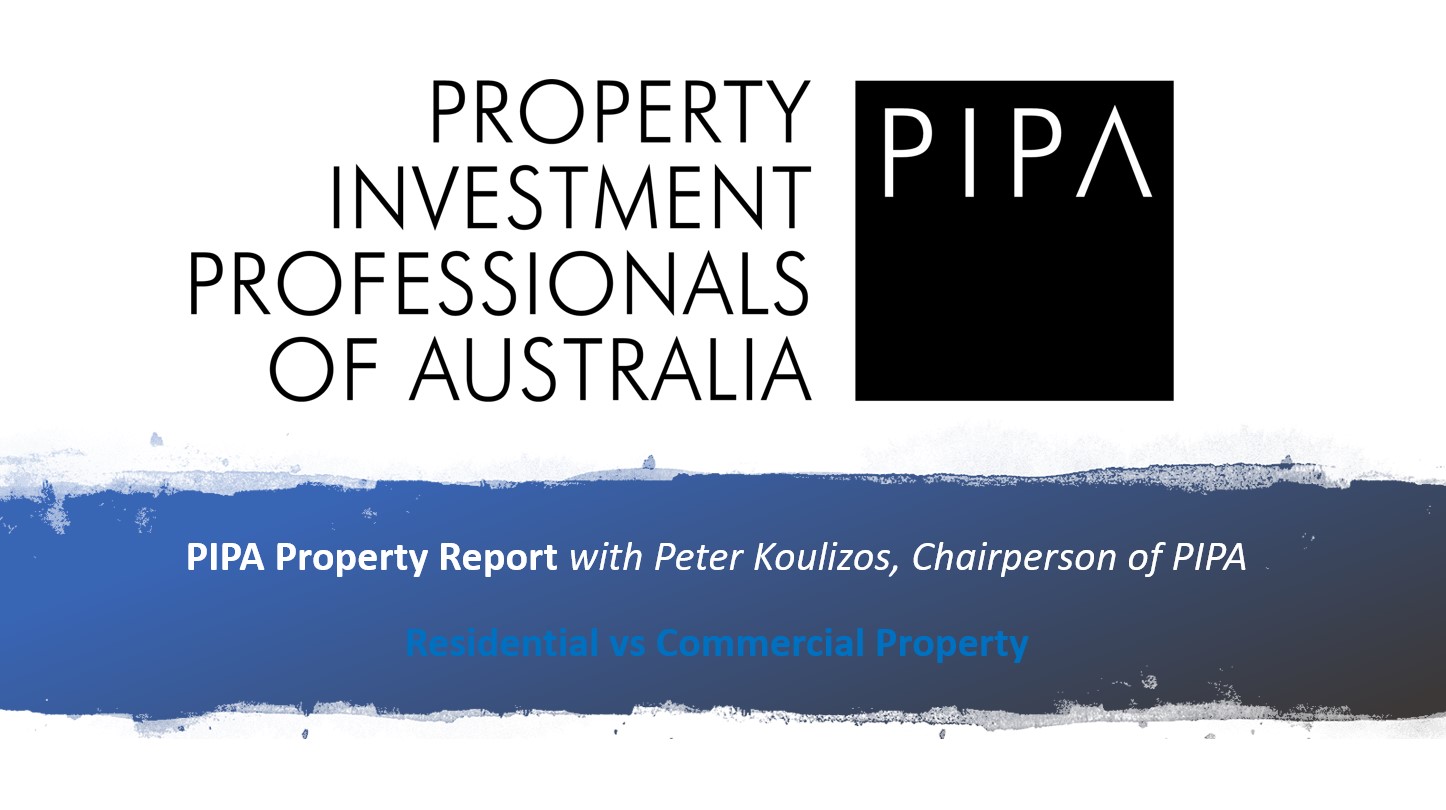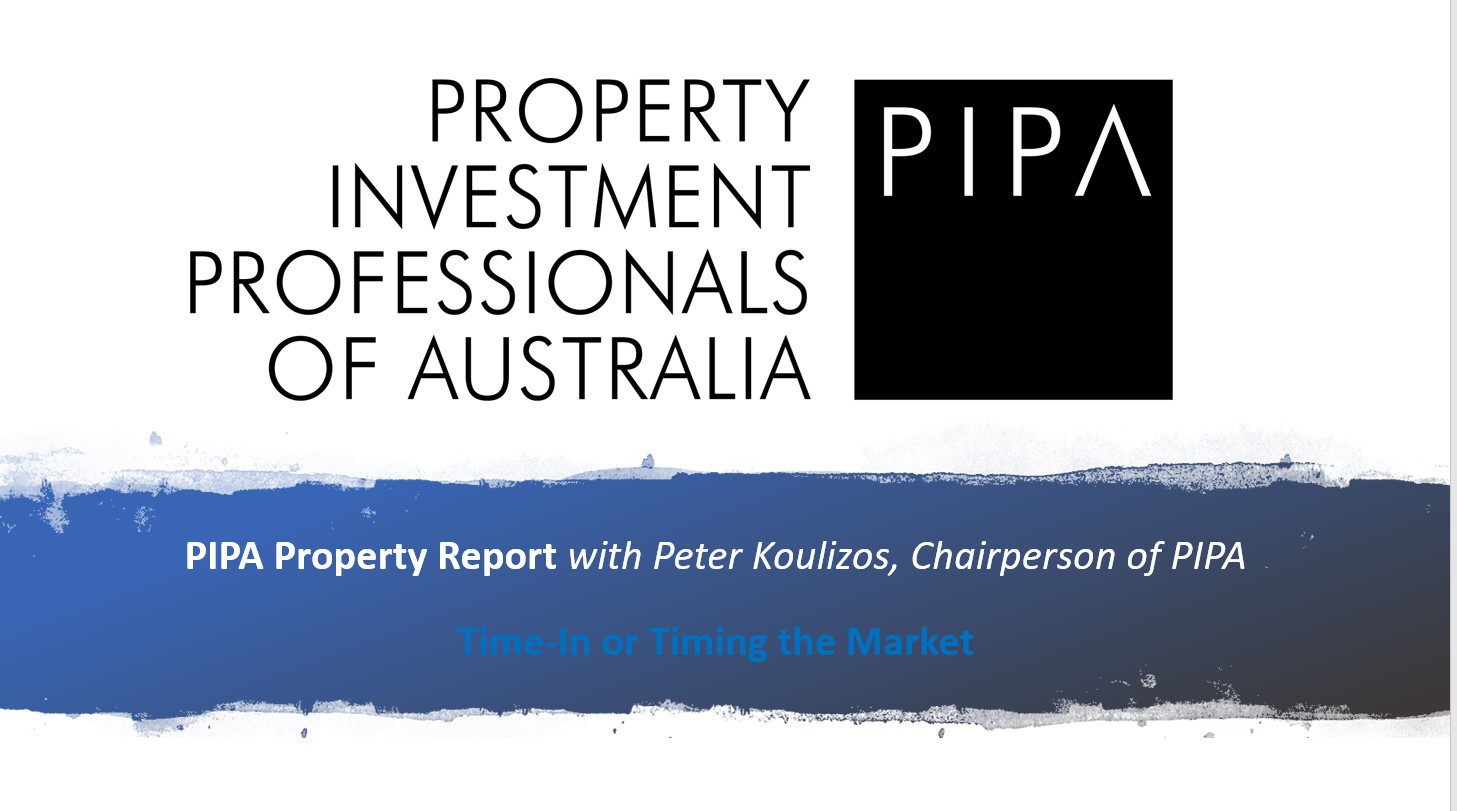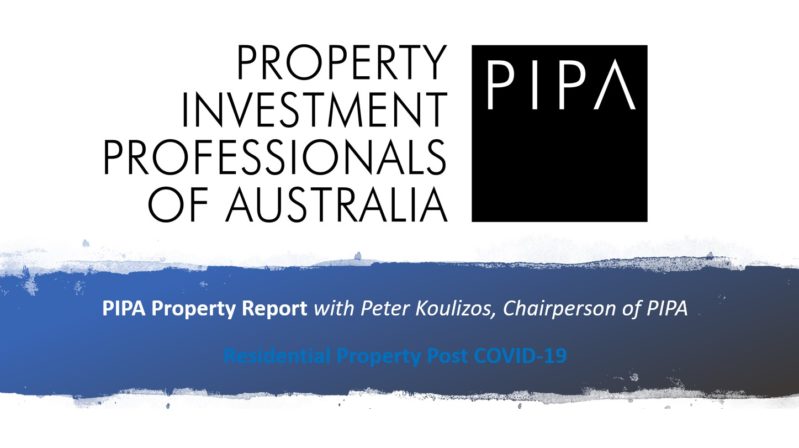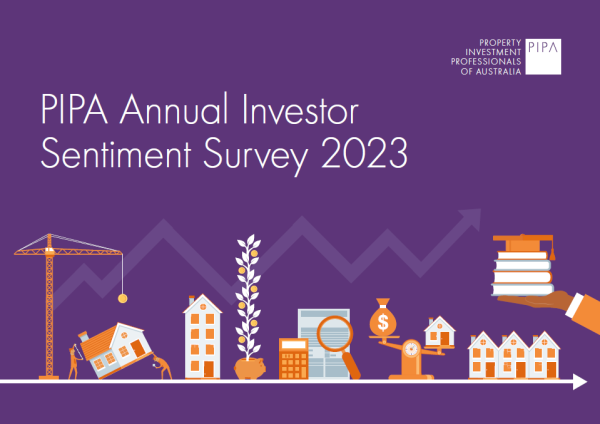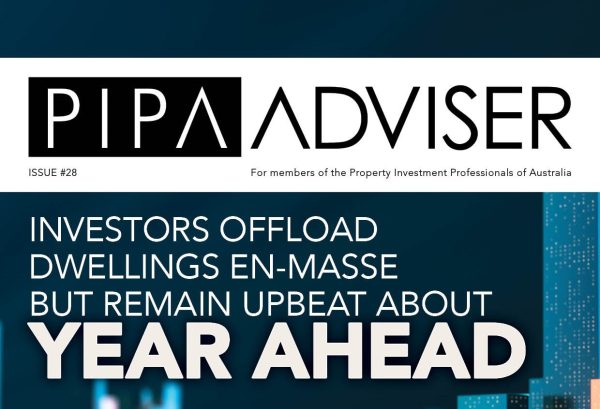PIPA Property Report – Capital Growth vs Rental Return
Oct 2020Karen Millers
Categories
Location ReportsMedia releasesNational market updatesPersonal advisersPIPA AdviserPIPA Annual Investor Sentiment SurveysPIPA Member ProfilesPIPA video updatesPIPA webinarsPodcastsProperty advisersProperty newsLatest Articles
‘More chance of winning lotto’ than housing targets being met
PIPA Member Profile | Amanda Turner, Opulence Property
PIPA Chairperson, Peter Koulizos analyses the data to discover whether investing for capital growth or rental return is the more favourable investment strategy over the long term.
Transcript
– Hi and welcome to the PIPA property report. My name is Peter Koulizos I am the chairperson of the Property Investment Professionals of Australia. And I’d like to welcome you to this report. So this report is not just for people in the property investment industry, especially our PIPA members, but more particularly our qualified property investment advisors. But it’s also for the general public property investors, homeowners, so that you can better inform and educate yourself so when the time comes to make that decision to buy a property, you are making the best decision for yourself. So today I’m looking at the very often asked question, capital growth or rental return are you better off buying a property for its capital growth, or you’re better off buying a property for its rental return? Well, I’m gonna show you some simple numbers here. I’ll give you my opinion, but in the end you can make up your own mind. So let’s start by sharing my screen. There we go. Okay. So what I’ve got here is property A a $500,000 property property B also $500,000 and we’re buying each one in the year 2020. So property A has a 4% rental return, but a 7% capital growth. Property B swapped around better rental return, 7% rental return, but only 4% capital growth. So all I’ve done is just swap those numbers around. So we’re starting off at 2020, and we’re gonna look at it at 20 year time period. Each property starts off with 500,000. So property A increases by 7% in 2021 gives us 535,000 increases by 7% in 2022, 572,450, all the way down to the year 2040, where it’s worth 1,934,482 for a total gain of 1,434,842. So all I’ve done is take away the original price, 500,000 from the final price and we’ve made a capital gain of just over 1.4 million. If I come over to property B 2020 it’s 500,000 in 2021 it increases by 4% so now it’s up to 520,000. Keep going to the year 2040, and it’s worth just over a million dollars. So our gain, again, taking away our original property price from our final property price of made just over half a million dollars in capital gain. But that’s only part of the story ’cause we’re looking at rental return. So let’s go back to the property A in the year 2020, I’m earning 4% rate. So that’s $20,000 from this $500,000 property. Next year, still 4% rate, but from a higher property value. ‘Cause remember the property is increasing at 7% per annum. Rental return is 4% of that. So by the year 2040, I’m earning $77,394 in rent. When I add up 20 years worth of rate, it works out to $897,304. That’s the total rent. In property B I’m getting a 7% return. And let’s imagine that this is say a new apartment, because generally new properties in particular apartments have a higher gross rental return, not necessarily net because you also you need to pay body corporate fees, but I’m just keeping it simple for today. So let’s say this is an apartment $500,000 apartment with $35,000 in rent. Whereas property A is an established house in a suburb on some sort of land earning you 20,000. So the apartment, if we look at year one, you would say, “This is a much better investment for rental return ’cause I’m earning 35,000 a year compared to 20,000. And for many, many years, it continues to outperform rental return.” But look, when we get to the 20th year property B, which originally had the higher rental return is earning $76,689 in rent. But property A 77,394. So after 20 years, which is a long time, but after 20 years, the rental return on property A is higher because our rental return is based on the capital growth. It’s 4% of whatever the property is worth the property increases in value much faster than property B. So in the 20th year, not only have we finished up with a much better capital growth, but we’re also getting a better rental return. However, if we add up 20 years of rental return for property B, we finish up with 1.18 million dollars in total rent. Alright, so let’s make a comparison here. Property A, we made a capital gain of $1,434,842. Property B, only $595,562. The difference in gain, that’s what this number is down here the difference in gain is 839,281. Rental return property A earned a total in 20 years of $897,304. Property B $1,118,992. So property A earned a total of $220,619 less in rent, over 20 years than property B. So property A wins for capital growth property B wins for rental return. But if we were to put the two together, so what’s that total return looking at capital gain and rent property A wins $617,662. So in my humble opinion, you are better off looking for a property that has better capital growth than rental return. As I’ve tried to demonstrate here. Now you can set up a simple spreadsheet yourself, change the numbers around. Why don’t we try now? Let’s say a really low return of 2% and a higher return of 8%. And here we change that from seven to eight and we change that to two. Property A does even better. Change it again. So let’s say rental return of 5% capital growth, 6% change these around, so rental return of 6%, this one, 5%, property A still better off. So I’ll take you it back to the original 4% rental return for property A, with the 7% capital growth, 7% rental return for property B with a 4% capital growth. So as I said before, in my opinion, you’re better off looking for property that has good capital growth. Generally speaking, that’s older houses, rather than apartments. Relatively close to the city, or very close to the sea, rather than looking for good rental return, which you’ll often find in brand new apartments. These are just simple figures I haven’t factored in after tax. I hadn’t factored in body corporate fees, maintenance and all of that, but it won’t make a difference to the total picture where capital growth is better than aiming for rental return. Thanks very much for your time, but before I go today, I do wanna share something with you and that is giving PIPA a plug. Now, many people ask me, “Peter, I’m really interested in property. I’d like to work in property. What are my I choices?” Well, really the property sales or property management if you wanna look at getting a qualification from the various real estate institutes or registered training organizations while you go to uni and you do a degree in property and probably become a . However, there is an option to become a property investment advisor. Importantly, a qualified property investment advisor, otherwise known as a QPIA. So if you want to work in property, not interested in sales and management, don’t wanna go to uni, this could be an option. There are six modules and what we do offer is something called RPL or Recognition of Prior Learning. So for example, if you are a mortgage broker, you wouldn’t have to do module four you would get recognition of prior learning for that. If you are a real estate agent, you wouldn’t have to do module five you would get up here all for that. So for those people who are already working in the industry, you can add another feather to your cap you can be a mortgage broker plus a QPIA. You could be a real estate agent or a buyer’s selling agent or buyer’s agent plus a QPIA. Well for those people who are looking for a different career, you study the six modules, become a qualified property investment advisor. One you’re helping yourself out because you also add another feather to your cap with an option to change your career but importantly, the more QPIAs we have out there advising clients what to do and the less cowboys we have who are ripping off people and taking undisclosed commissions from property developers of new apartments, the far better off you’re going to be and the far better off the property market is going to be. So consider that if that is of interest to you, contact PIPA, speak to Karen, our wonderful secretary, and she will be able to assist you. So, I’ll stop sharing there. Thanks very much for your time. I hope that you’ve enjoyed the PIPA property report for this time based on capital growth and rental return and look forward to seeing you for the next one. Thank you.
